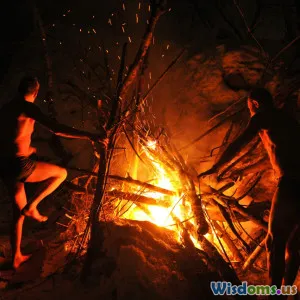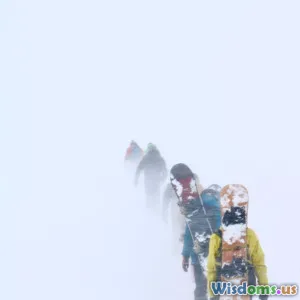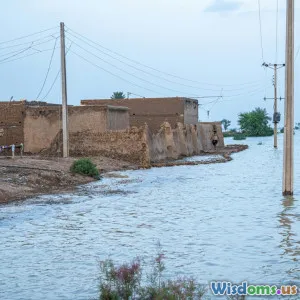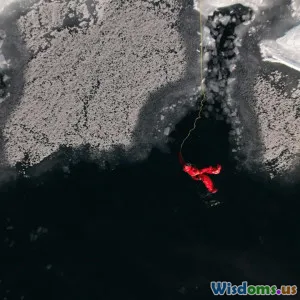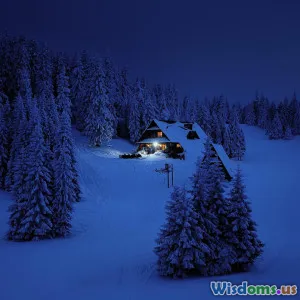
Surprisingly Simple Snow Shelters That Save Lives
8 min read Discover easy-to-build snow shelters that provide vital protection and save lives in winter emergencies. (0 Reviews)
Surprisingly Simple Snow Shelters That Save Lives
Winter wilderness poses unique challenges to survival, where the biting cold, wind, and snow can quickly lead to hypothermia or worse. While high-tech gear is helpful, sometimes your best defense lies in simple, effective snow shelters that you can build with minimal tools or experience. These shelters trap body heat, block wind, and maintain temperatures significantly warmer than the outside, often making the difference between life and death.
In this article, we dive deep into the surprisingly simple techniques for building snow shelters—such as quinzhees, snow caves, and trenches—that are historically proven lifesavers and accessible even to beginners. We also look at critical building tips, supporting facts, and real-world survival stories. By the end, you'll be equipped not only with knowledge but inspired to hone this vital skill.
Why Snow Shelters Are Essential
Snow is an excellent insulator due to the trapped air crystals within it. When properly constructed, a snow shelter can maintain internal temperatures close to 32°F (0°C) even if it's -40°F (-40°C) outside. In extreme cold, sheltering effectively can prevent hypothermia, frostbite, and death.
According to the National Outdoor Leadership School (NOLS), building even a rudimentary snow shelter can increase your survival chances by upwards of 50% during winter emergencies. For hikers, backcountry skiers, and mountaineers, mastery of snow shelters is often considered as important as navigation and first aid.
Types of Surprisingly Simple Snow Shelters
1. Quinzhee Shelter
A quinzhee is a Russian word meaning “shelter,” and it corresponds to a shelter created by hollowing out a pile of consolidated snow. Unlike igloos built from blocks, quinzhees depend on snow piling and sintering for structural strength.
Construction steps:
- Gather snow: Find dry, loose snow and pile it into a mound about 4–6 feet high.
- Allow sintering: Let the snow harden for 1–2 hours. This bonding process is crucial for stability.
- Hollow out: Carefully scoop out the snow from the mound’s interior, leaving wall thickness about 12–18 inches.
- Ventilation holes: Create small holes for airflow.
- Entrance: Dig it laterally or slightly downward to reduce drafts.
Benefits:
- Quick and requires minimal tools.
- Provides excellent insulation.
- Can shelter multiple people.
Example:
The Yukon Quest sled dog race participants often build quinzhees in emergency conditions due to their speed of construction and warmth retention.
2. Snow Cave
Snow caves are shelters carved into dense snowbanks or drifts, often formed by natural wind depositions.
Construction steps:
- Locate a friendly snowbank: Find an avalanche-safe dense drift.
- Dig inward: Excavate into the snowbank horizontally, carving an internal chamber.
- Create domed ceiling: Rounded domes prevent dripping and maximize strength.
- Make ventilation holes: Crucial to avoid carbon dioxide buildup.
- Entrance: A low entrance tunnel to trap cold air outside.
Benefits:
- Extremely windproof and warm.
- Takes advantage of natural terrain features.
Example:
Non-governmental alpine rescue teams reported snow cave usage significantly reduces hypothermia incidents in rescue scenarios because of stable internal temps.
3. Snow Trench Shelter
The snow trench is essentially a long, shallow pit dug into snow, sometimes roofed with branches or remaining snow.
Construction steps:
- Dig a trench: About 2 feet deep and 6 feet long.
- Roof: Use natural materials like boughs covered with snow or tarps if available.
- Sandbag barrier: Place snow walls or backpacks at the entrance against the wind.
Benefits:
- Simple and fast.
- Less insulating compared to caves, but better than no shelter.
Example:
Hikers caught in sudden storms have survived overnight in improvised snow trench shelters by using available materials.
Building Considerations and Safety Tips
-
Ventilation: Prevent suffocation by always creating ventilation holes. Carbon dioxide buildup is a silent but deadly danger.
-
Structural integrity: Avoid walls and roofs thinner than a foot. Always test stability by light tapping.
-
Location: Choose areas safe from avalanche risk and falling branches.
-
Insulation: Use natural materials (pine boughs, backpacks, clothes) to create a floor separating your body from direct contact with snow.
-
Emergency gear: If available, pack a compact shovel and a tarp to expand options.
-
Beware of melting: Warm air can cause dripping inside; proper dome shaping and stiff roofs help mitigate water.
-
Temperature maintenance: Keep a dry sleeping bag or insulating layer inside. Wet clothing must be removed to avoid heat loss.
Real-World Examples That Testament to the Effectiveness
Case 1: The 2011 Alps Rescue
Three climbers trapped by a sudden storm built a quinzhee overnight with part of their gear and snow. The shelter maintained internal warmth close to freezing, despite outside temperatures plunging to -15°F. Rescue teams later noted the men remained conscious and avoided frostbite thanks to this shelter.
Case 2: Sled Dog Musher’s Quick Thinking
During the 2014 Iditarod Trail Sled Dog Race, a musher caught in a blizzard constructed a snow cave with the help of on-board shovel. The shelter kept the team insulated until weather cleared. His prompt action is credited with saving both human and dogs.
Conclusion: Mastering Survival Isn't Always Complex
Snow shelters demonstrate an essential truth of wilderness survival: sometimes, simplicity is your greatest asset. While modern gadgets and clothing have advanced, the ability to build a basic snow shelter remains a universal skill that can protect from the ruthless cold and save lives.
By understanding how to build quinzhees, snow caves, and trenches, anyone venturing into winter environments can transform an emergency into an opportunity for survival. This knowledge empowers adventurers, hikers, and emergency responders alike.
Start practicing these shelters safely now—be informed, prepared, and confident, because in winter wilderness, a simple snow shelter might just be your life’s greatest fortress.
Rate the Post
User Reviews
Popular Posts












